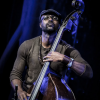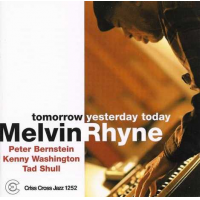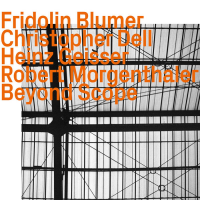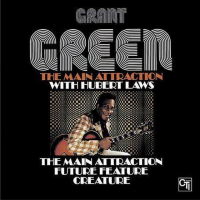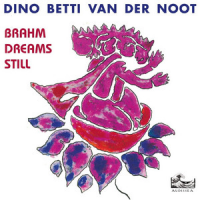Home » Jazz Articles » Liner Notes » Kahil El'Zabar: What It Is!
Kahil El'Zabar: What It Is!
A statement of the joy of interactive play, and a proclamation of fresh energy advancing the Great Black Music imperative to be in the moment and keep it real.
Opening with "The Nature Of," What It Is! proves to be neither avant-garde nor old guard, but genuinely contemporary expression, directly accessible to anyone who likes to listen. Kahil and bassist Junius Paul introduce a straight-ahead vamp, which tenor saxophonist Kevin Nabors and keyboardist Justin Dillard (here playing organ) overlay with the kind of catchy theme and venturesome modal improvisation informed by the heartiness of soulful players like Gene Ammons, with whom Kahil toured during his teenage years, and, say, Dr. Lonnie Smith.
"Impressions," the imperishable motif John Coltrane derived from the scalar shifts of Miles Davis's "So What," is clearly a track laid down in homage to Trane's classic mid '60s quartet. It quickly launches Nabors into the extended reaches of blowing technique where horn and voice are one; Dillard solos on piano, of course recalling the efforts of his forebearer McCoy Tyner; Kahil cuts loose with the sort of lightning-and-thunder polyrhythms Elvin Jones originated, and Paul holds his ground as surely as bassist Jimmy Garrison did while the earth quaked around him.
On "What It Is!," this album's title track, Kahil puts his congas front and center of an arrangement that synchronizes a bass pattern, sax response and effective minimalism by Dillard on Fender electric piano. Then he sings an undeniable truth regarding the challenges that face everyone today: "If we use our heads/We won't die in the land of the dead." This brief piece (four minutes—radio friendly!) has a vibe akin to the '70s r&b/soul testimonies of Curtis Mayfield and Marvin Gaye. Which is not surprising since Kahil cites Master Henry Gibson, conga player on "Superfly" and with Eddie Harris among others, as his first and most influential drum teacher. Drummer Otis "Candy" Finch, who may be best known for his role on Dizzy Gillespie's Swing Low, Sweet Cadillac, was also a formidable presence; he was Kahil's uncle.
Appropriately, "Song of Myself" is the most exploratory and distinctive composition Kahil penned for this album. Dillard, on organ, enters the mysterious realms that Larry Young delved into back in the '60s but which have rarely been visited since; Nabors gradually joins him in this little-charted territory, while Paul and Kahil lay down a sure path. The ballad "Central Park West" is another work from Coltrane's book, personalized by confident Nabors, Dillard's gospel/blues/bop organ style, Kahil's firm hand-drumming and Paul's solid underpinning. The bassist's tone throughout his solo is another plus.
Kahil performs on kalimba—the "thumb piano" of West and South Africa—on the tender "From the Heart." The entire group's sensitivity, each member's deep but unforced attentions to each of his colleagues, is one lovely aspect of this tune, and indeed all of What It Is! The variety of moods the musicians evoke throughout the album is a complementary dimension. "Kari," for instance, is Kahil's son, a 16-year-old, 6'3" visual artist who had his first professional exhibit at age 11. The quartet imbues the song named for him with strength and nobility, no doubt bespeaking his father's pride.
But then, Kahil has much to be proud of. His quartetmates are the latest of his many protégés to come into careers of their own, as saxophonist Nabors makes a name for himself based in Austin as well as Chicago, and Dillard stretches out as a Hammond organ endorser with his own trio. In 2013 Kahil celebrates the 40th anniversary of his Ethnic Heritage Ensemble, and he continues to collaborate with such international stars as Nona Hendryx and Roy Ayers while serving as artist in residence for the City of Bordeaux.
He's been in the bands of Cannonball Adderley, Stevie Wonder and Paul Simon, besides leading his Ethnic Heritage Ensemble, Ritual Trio and Infinity Orchestra. He's scored several films, and written arrangements for Disney's theatrical production of The Lion King. He's been chairman of the AACM's Chicago chapter, co-founded the National Campaign for the Freedom of Expression, curated breakthrough festivals and music series, and sat on prestigious arts funding panels. In 2006 he earned his doctorate in interdisciplinary art from Lake Forest College, and in 2011 he was presented with an American Ambassador's Award for more than 35 years of international cultural work supporting the arts.
His resume is certainly impressive, but what's most significant is that his music has evolved and endured since his debut as a teenager in Muhal Richard Abrams' late '60s quintet. "I used to think I had to play really hard, especially in the Ethnic Heritage Ensemble where there was no other rhythm section," Kahil says. "But ten years into my professional career I changed my whole approach, realizing that softness of attack is as powerful as large vibrato. I started looking more closely at timbre and texture to affect sound and emotion. At this point I'm able to move with a range of dynamics as a percussionist, and as I've gotten older I've come to understand time in a completely different way.
"I feel I've developed an individual voice, as percussionist and composer. I'm not always the front guy in a band, but soloists have to work off structures that are interesting, that have shadings and intricate movements. So supporting is as important as projecting."
In What It Is! Kahil El'Zabar supports and projects. On traps set, hand drums and kalimba he lifts all in earshot, making his quartet fly. You listen and before you know it, it's over. Is that it? you may wonder. Yes, that's it, but there's a lot in that—so play it again. It is What It Is!
Liner Notes copyright © 2026 Howard Mandel.
What It Is! can be purchased here.
Contact Howard Mandel at All About Jazz.
Howard is a Chicago-born writer, editor, author, arts reporter for National Public Radio, consultant and videographer. Visit Howard at howardmandel.com.
Track Listing
The Nature Of; Impressions; What It Is!; Song of Myself; Central Park West; From The Heart; Kari.
Personnel
Additional Instrumentation
Kahil El'Zabar: drums, African earth drum, kalimba; Justin Dillard: piano, Hammond B3 organ, Fender Rhodes; Junius Paul: bass.
Album information
Title: What It Is! | Year Released: 2013 | Record Label: Delmark Records
Tags
PREVIOUS / NEXT
Kahil El'Zabar Concerts
Support All About Jazz
 All About Jazz has been a pillar of jazz since 1995, championing it as an art form and, more importantly, supporting the musicians who make it. Our enduring commitment has made "AAJ" one of the most culturally important websites of its kind, read by hundreds of thousands of fans, musicians and industry figures every month.
All About Jazz has been a pillar of jazz since 1995, championing it as an art form and, more importantly, supporting the musicians who make it. Our enduring commitment has made "AAJ" one of the most culturally important websites of its kind, read by hundreds of thousands of fans, musicians and industry figures every month.



